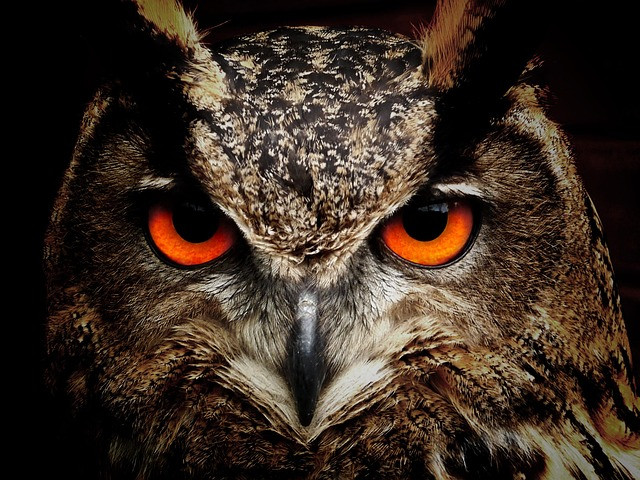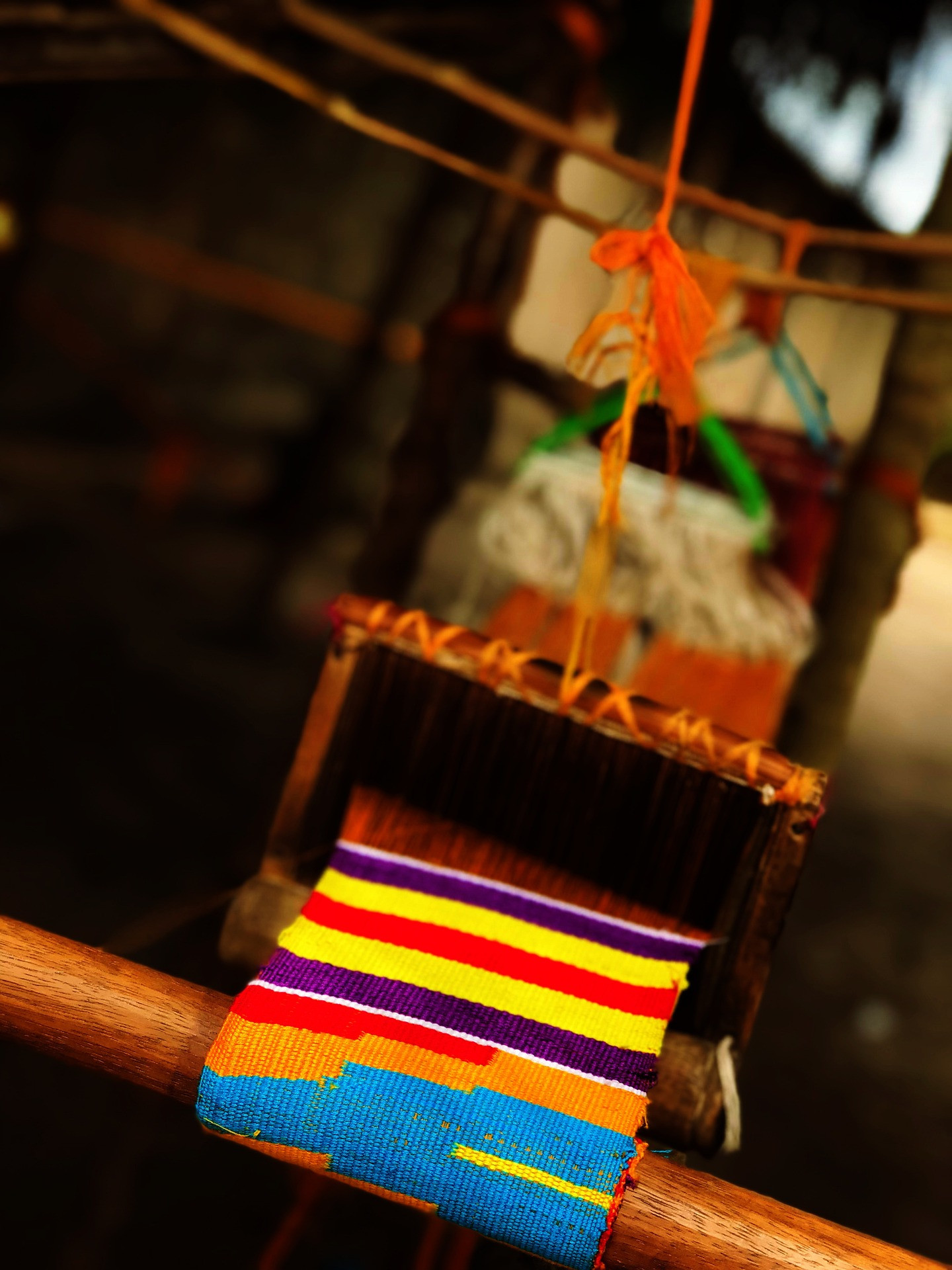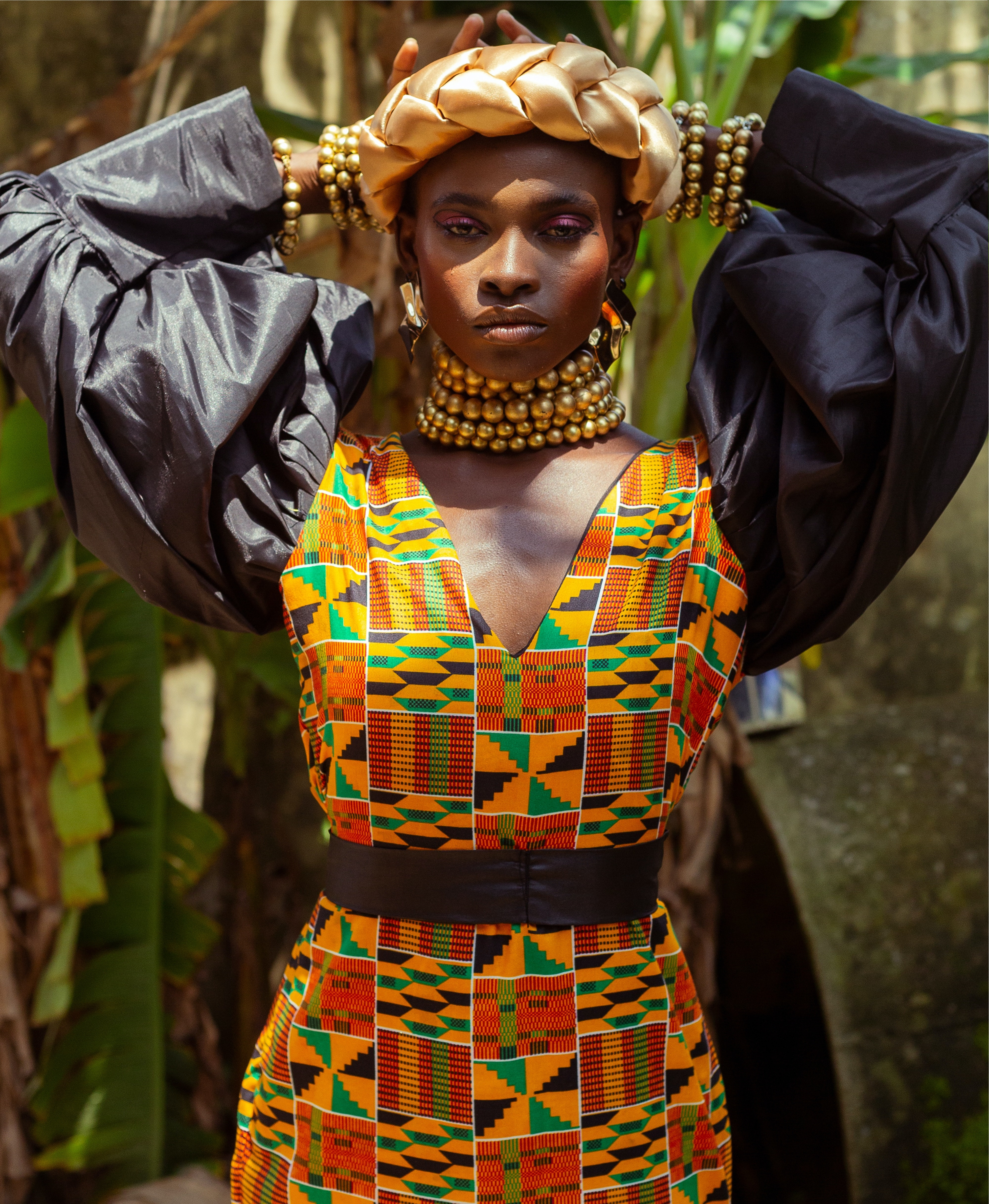Traditional Weaving and Dyeing Techniques Used in Africa
 Kha
KhaIntroduction
Vividly adorned textiles represent the vast cultural and ethnic diversity of Africa, an undeniable source of inspiration and awe for artisans and enthusiasts around the globe. While they certainly exude an air of craftiness, African textiles depict the tale of a rich heritage – its fiber weaves a fascinating tapestry that binds the religious, social, and political avenues of life.
In Africa, intricately designed textiles have applications ranging from clothing to wall hangings, tent canopies, and bed linens to carpets and rugs.

The textile-making process begins with the processing of yarn to be used in weaving. Woven textiles can be further embellished with such techniques as dyeing, painting, stamping, embroidery, patchwork, or appliqué. Fibers traditionally used to weave African textiles include cotton, silk, wool, raffia (Raffia palm leaves), bark, and fibers like jute and flax (for linen). Synthetic fibers like rayon, lurex, acrylic, and polyester are now used. Interweaving threads of lurex (a polyester fiber encasing a metallic insert) provide a much-adored shiny look. From a list, that is not exhaustive, select weaving techniques and dyeing techniques popular in African tradition are explored ahead.
Traditional African Weaving Techniques
Weaving is a process of creating fabric from thread or yarn. The warp (longitudinal) threads are held taut on a loom while the weft (transverse) thread is drawn through and slid under and over warp threads. African textiles utilize a blend of weaving techniques. Some of them are discussed further:
Strip Weaving
Narrow strips of cloth, typically measuring a few inches in width and several feet in length, once woven, are placed end-to-end and sewn together to form a larger fabric that has a patchwork-like appearance. This technique imparts versatility to textiles, with strips of different colored yarns/threads adorned by diverse shapes and patterns bound into a single fabric. Strip weaving is generally observed in textiles hailing from West Africa. Popular examples are the Kente (KEN-tay), Bokolanfini (boh-koh-Lan-FEE-nee) (mudcloth), and Aso Òkè (ah-SHOH-kee) textiles.

Plain Weave
The simplest weaving structure where each weft thread goes over and under alternating warp threads produces a simple over-under pattern. Raffia cloth (Kuba, Congo) is woven from raffia fibers in a plain weave structure.
By varying the relative thickness of the warp and weft yarns, stripes can be produced along the fabric’s length or width, respectively. Integration of two or more dyed yarns gives rise to vibrant striped and checked patterns.
Warp-Faced Textiles
Closely packed warp yarns weave a pattern that sits on a scaffolding of weft yarn. Fibers of tightly packed weft yarn constitute the pattern that is supported by a warp yarn framework. Weavers of Mali Fulani traditionally weave weft-faced blankets using yarn from the wool of local sheep. This weave structure is used in most North African clothing and carpets, in general.
-
Balanced Plain Weave - It comprises of warp and weft yarns in a nearly equal ratio with each being equally visible as is observed in cloth woven in Somalia. Float weaving, openwork, pile weave, and tapestry weave are some of the decorative weaves that enhance the adornment of textiles.
-
Supplementary Weft-Float - A sub-category of float weaving, this technique uses additional (supplementary) weft yarn(s) inserted through select warps, spaced evenly, to create a decorative floating pattern that does not interlace with the warp but forms a raised surface pattern. This technique is used in Kente and Akwete (ah-KWE-te) clothing. Variations of supplementary weft weaving patterns were widespread in ancient Egyptian textiles.

-
The Kente cloth is a complex combination of weaving techniques with alternating weft-faced and warp-faced areas coupled with supplementary weft-float patterns in narrow strips of cloth. The application of such techniques in a wider design is an arduous process, demanding extraordinary skill and precision. Traditionally, it was woven exclusively for the Ashanti royalty but now is accessible to anyone who can bear its expense.
-
Akwete is woven by Igobo women from cotton fibers with rayon, silk, or lurex threads making decorative motifs. It is generally used as women’s wrappers.
Openwork Weave
This provides a lacey appearance to the fabric. Holes are woven in the yarn by inserting a comb between the warp threads and weaving around its teeth. Aso Òkè, a ceremonial fabric of Nigeria’s Yoruba tribe, is an excellent example of the warp-faced and supplementary weft patterns with occasional use of openwork structures.
Traditional Dyeing Techniques Used in Africa
Dyes are a popular traditional approach to beautifying textiles – either as yarns/threads before weaving or dyeing the complete length of the fabric once woven. The oldest, most well-known dye in Africa – indigo – continues to be used despite the convenience of cheaper, factory-made dyes. For indigo dyeing, the leaves of the indigo plant are rolled into balls, fermented (to make them water soluble), and then submerged in a solution of water and caustic soda. The cloth is dipped briefly into the dye bath. The soluble, white indigo gets oxidized upon exposure to oxygen and reverts to its insoluble, dark form, dyeing the cloth. The Nigerian Yoruba tribe uses indigo to produce wholly dyed cloth (amure) and pattern or resist-dyed cloth (adire).
- Tied-Resist (Adire oniko) (ah-DEE-ray) aka tie-dye and raffia resist. Raffia fibers are tied around areas of fabric in which hundreds of pebbles, seeds, or kernels are individually placed to resist dye penetration and obtain small white circles against an indigo background. Similarly, the fabric can be folded into pleats to get striped patterns.
- Stitch-Resist (Adire alabare) involves stitching intricate designs on a cloth (folded in symmetrical patterns) using either the spine of raffia fibers (a category of Adire oniko) or cotton-polyester thread before dyeing. Patterns can be sewn by machine or by hand.
- Starch-Resist (Adire eleko) uses starch from cassava flour to paint one side of the cloth either through a stencil or by free-hand painting to create elaborate patterns. By experimenting with the size and complexity of the stencil, a variety of images and designs can be produced.
- Wax-Resist, African wax print, or Ankara is an evolved form of starch-resist dyeing. It uses paraffin or hot wax as resist agents replacing traditional starch, applied by block-painting instead of stenciling. When dipped in dye, only the wax-free portions of the cloth are dyed.

- Mud Dye: A part of Malian heritage, the Bokolanfini mud cloth uses fermented clay rich in iron-oxide to which leaf extract of the local N’galama tree is added. Tannins (plant compounds) from the leaf extract interact with iron from the clay to give dark brown or black colors (earth dye) which bind with the fabric to be dyed. Bamboo strips, sticks, or feathers are used to create geometric patterns that were believed to have a protective effect.
Other sources of dyes such as the bark, leaves, fruits, flowers, seeds, and even the roots of plants have been used for imparting such colors as red, yellow, brown, and green.
Conclusion
The revered status of textiles in the social, political, and religious avenues of society has allowed traditional African weaving and dyeing techniques, passed down for generations across millennia, to flourish and live on. The use of natural, organic raw material makes these traditional practices environment-friendly. However, the increasing use of plastic-based, cheaper materials like rayon, and polyester is cause for concern. By spreading awareness of sustainability and taking the steps necessary, we can preserve the true essence of African traditions.
References
- Picton, J. (2020). West Africa. A Companion to Textile Culture, 127-144.
- Decorative Techniques. (n.d.).Adire African Textiles.
- An Introduction to the Indigo Dye Styles of Western Africa. (2016). Heddels.
- Introduction
- Traditional African Weaving Techniques
- Strip Weaving
- Plain Weave
- Warp-Faced Textiles
- Openwork Weave
- Traditional Dyeing Techniques Used in Africa
- Conclusion
- References
Your Support Is All We Need.
Larry Rowbs foundation aims to make the fashion industry more sustainable and safeguard its workers.
But for this we need support from our community. We invite you to be a part of this cause by any of the following:
Continue Exploring
JOIN THE MOVEMENT!
Stay up to date with the roadmap progress, announcements and events conducted by signing up for our weekly newsletter.